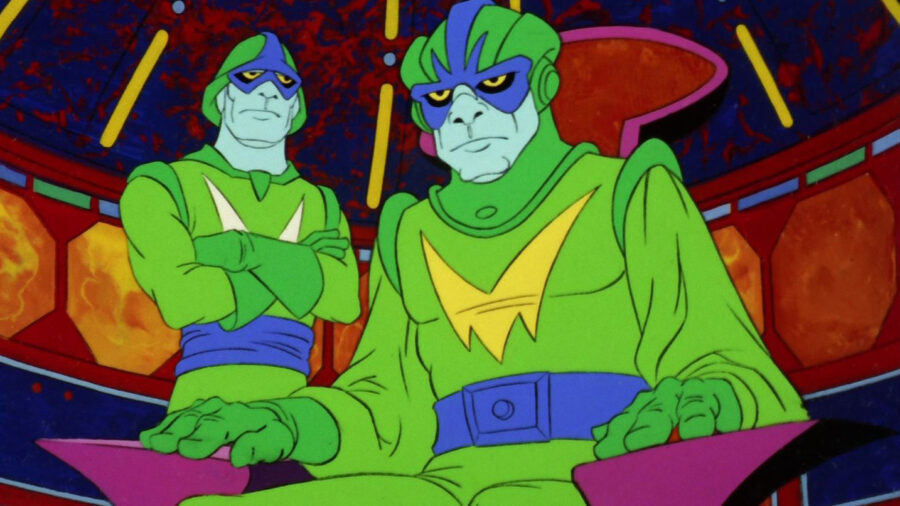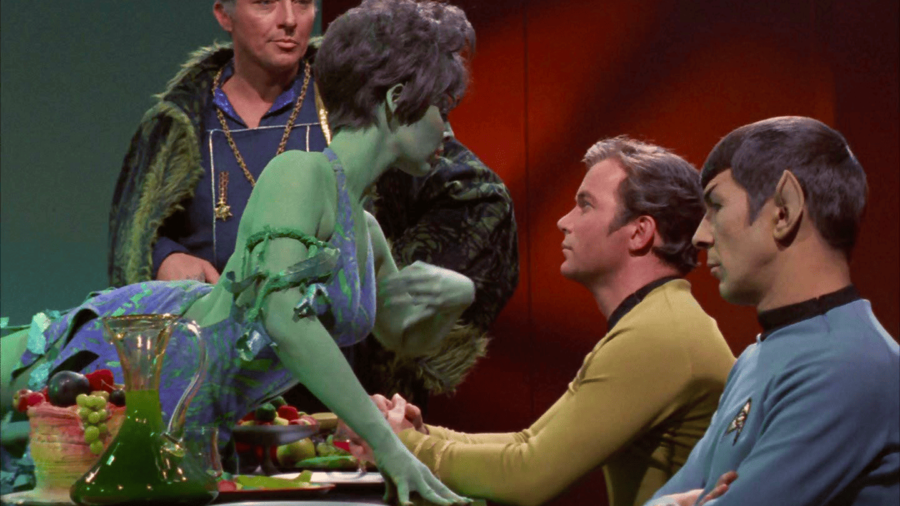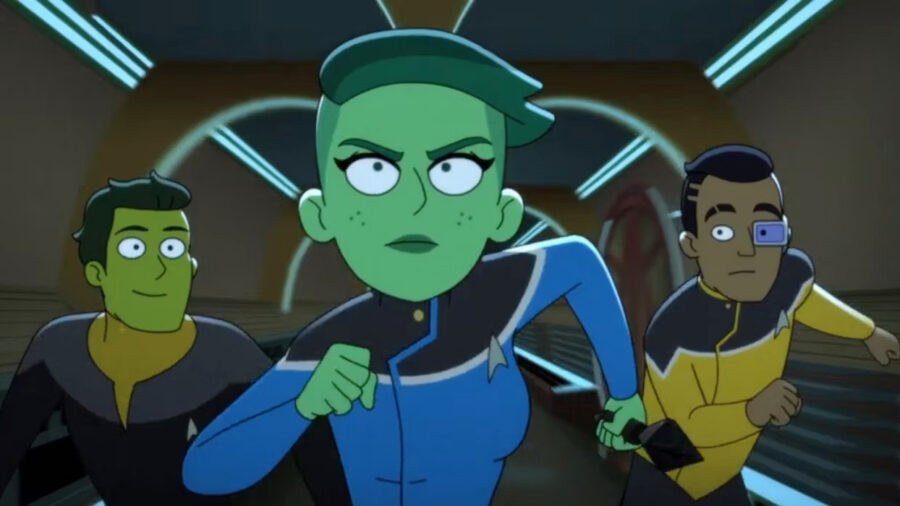Star Trek: Lower Decks Untangles The Animated Series Orion Problem

The first episode of Star Trek: Lower Decks Season 5 just resolved a long-standing problem with the Orions that was introduced by Star Trek: The Animated Series back in 1974. The animated Orions are depicted in the original cartoon as a blue-skinned alien race that wears bright green jumpsuits and looks very different from subsequent representations of Orions in the Star Trek franchise. Modern Orions look a lot more like Tendi (Noël Wells), and now, the discrepancy has been resolved: Lower Decks details how two distinct races of Orions exist.
Two Races Of Orions
The Orions that appeared in Star Trek: The Animated Series are simply a different kind of Orions, which is why they pronounce their name differently (O-ee-uns). Likewise, they wear different uniforms and have blue skin instead of green. The Orions that fans are more familiar with from Star Trek: The Original Series on through Star Trek: Lower Decks are green-skinned beings that simply share a planet with their blue-skinned Orion neighbors.
In the first episode of Star Trek: Lower Decks, “Dos Cerritos,” the two Orion races seem not to get along. Although Tendi is committed to keeping the peace, the two Orion factions are decidedly at odds, referencing their different skin colors as an insult. This simple resolution after 50 years is more of an inside joke than a serious explanation of a real plot hole, but it nonetheless lands well, giving fans a refreshing take on a long-standing, animated issue.
The History Of Orions

Orions were originally introduced in the pilot episode of the Original Series, but when the film was developed, the technicians didn’t know the Orion character, Vina (Susan Oliver), was supposed to be green and the color corrected her skin to look like her normal coloring.
The footage from this scene was then reused in a later episode and the space pirate aliens looked a lot more like the Star Trek: Lower Decks Orions, with green skin and swashbuckling culture. The Animated Series took the Orions in a different direction, color-wise, but kept the pirate culture as a part of their presentation.
Star Trek: The Animated Series was aimed at a youthful audience and as a result, the design team, led by Irv Kaplan, decided that bold, bright colors were important. Unlike Star Trek: Lower Decks, the original animated series was aimed at kids, so their Orions were likely designed to connect with that demographic, being depicted in a colorful, vibrant style, rather than in keeping with the Original Series design.
At the time, none of the designers could have predicted the more than 50 years of forthcoming Star Trek material that came with a fanbase that scrutinized the franchise for inconsistencies.
The Final Season Of Lower Decks

Because Star Trek: Lower Decks is wrapping up their series, it makes sense for them to make their mark on the franchise, proposing a simple, yet believable solution for the long-standing Orion divergence. Inserting the resolution into a storyline where Tendi breaks the mold and strikes out as a peaceful and diplomatic figure in contrast to her pirate roots is a brilliant way to build Tendi’s character while softly poking fun at our obsession with consistency in the Star Trek canon.
Always optimistic about the capacity for beings to develop empathy for one another and to forge alliances based on mutual benefit, Star Trek: Lower Decks has updated the Orion aliens with a hopeful new chapter.













Login with Google